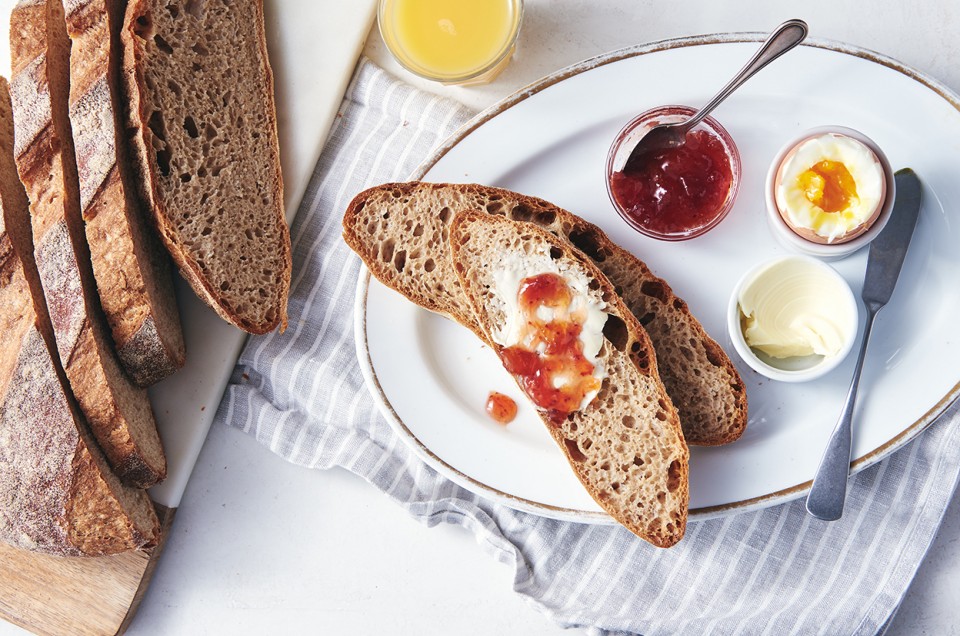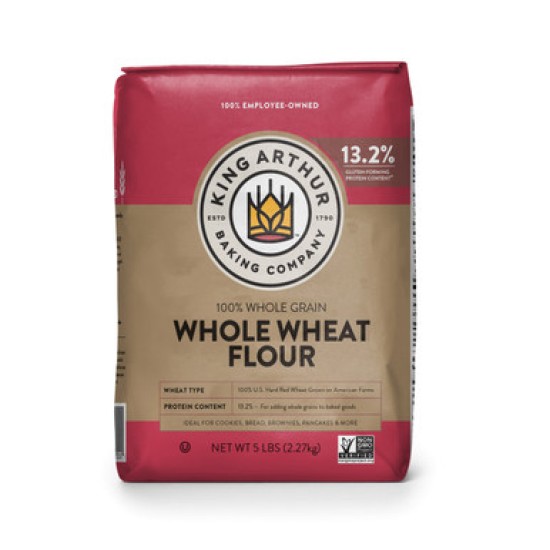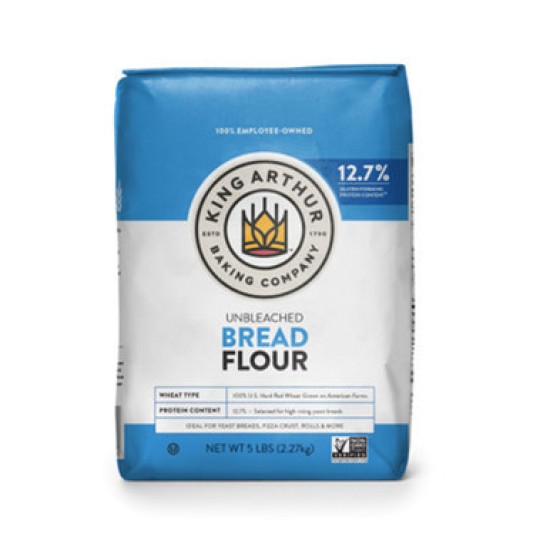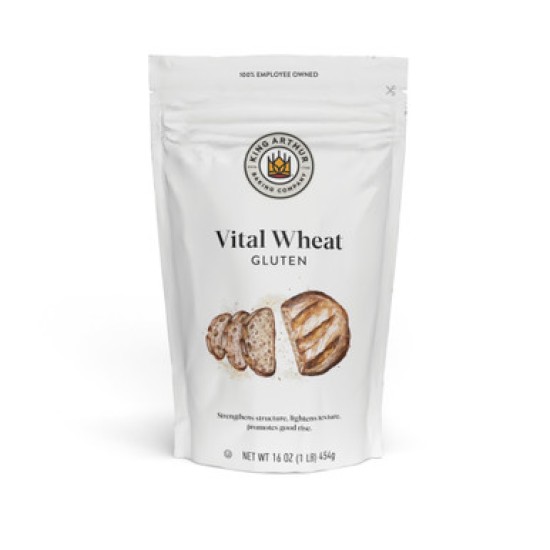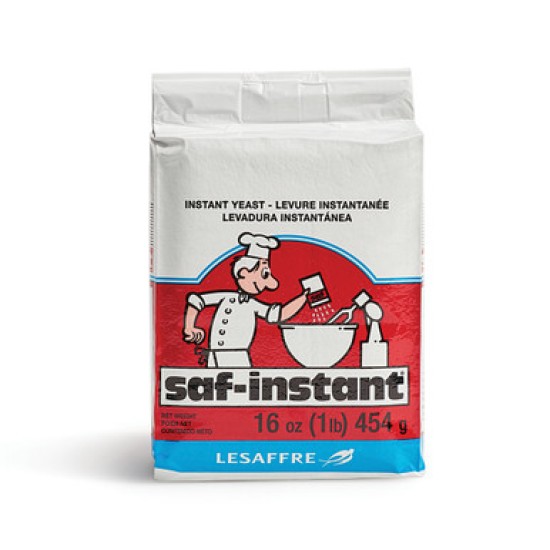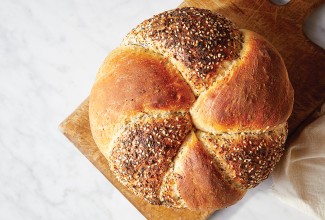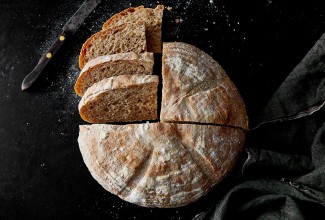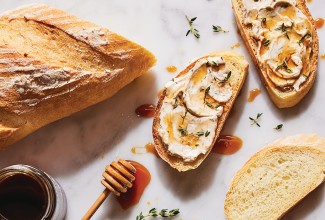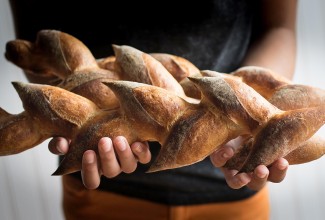-
Weigh your flour; or measure it by gently spooning it into a cup, then sweeping off any excess. Mix everything together until well combined. The dough will be quite sticky.
-
Put the sticky dough into a large bowl or dough bucket, greased or not; it's not critical to grease the container. Cover lightly.
-
Let the dough rise; 2 hours at room temperature should do it. It'll about double in size.
-
Cover the bowl or bucket so it's airtight, and refrigerate overnight, or for up to 3 days. The longer the dough chills, the more sourdough-like tang you'll taste in your bread.
-
When you're ready to bake, remove the bucket from the fridge. You'll notice the dough has collapsed a bit; this is perfectly normal.
-
Grab a softball-sized piece of dough; it should weigh about a pound. As you do this, you'll see long strands of stretchy dough clinging to the sides of the container. This is evidence the dough has developed its gluten completely without kneading, simply by resting in the refrigerator.
-
Gently round the dough into a ball. Place it on a piece of parchment that you've sprinkled with semolina, cornmeal, or flour. These will help keep the dough from sticking to the parchment.
-
Cover the loaf, and let it warm up and rise for 2 hours at warmish room temperature (about 75°F to 80°F is good). If your house is cold, try putting the bread in your turned-off oven with the oven light on. The light bulb will produce just enough heat to keep the loaf comfortable. After 2 hours, your loaf should have expanded noticeably. It'll spread more than rise upward, but that's OK.
-
While the bread is rising, preheat your oven to 450°F. If you have a pizza stone, put it on a lower rack and let it heat up as the oven warms.
-
Just before baking, brush or spray the loaf with lukewarm water, and sprinkle it with seeds, if desired.
-
Use a sharp knife or lame to give the bread three quick slashes, about 1/2" to 3/4" deep.
-
Transfer the bread to the pizza stone. If you're not using a pizza stone, place the bread on a baking sheet, and put it into the oven. Bake the bread for about 20 minutes, until it's golden brown and a digital thermometer inserted into the center reads at least 190°F.
-
Remove the bread from the oven. Wait until the bread is completely cool before slicing; cutting into a loaf of hot bread can make it irreparably gummy.
-
Store completely cooled bread, well wrapped, at room temperature for a couple of days; freeze for longer storage.
